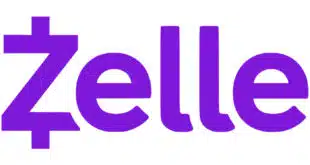JPMorgan Chase plans to discontinue its Chase Pay mobile wallet. Other banks are shuttering their wallet apps, too. Is there no longer—or was there ever—a place for bank-sponsored wallets for mobile payments?
Apple Pay, Google Pay, and Samsung Pay, collectively “the Pays,” seem to get all the attention when the topic of mobile wallets comes up. But there is another cohort of mobile wallets out there, a group sponsored by banks. And they’re folding.
JPMorgan Chase & Co. made headlines in late August when it disclosed it would discontinue its Chase Pay app early in 2020, not long after the wallet’s third anniversary. The coming demise of Chase’s wallet was notable in part because of its public nature. Three other payments wallets sponsored by some of the nation’s biggest banks already have died quiet deaths.
The deceased include Citigroup Inc.’s Citi Pay, the Wells Fargo Wallet from Wells Fargo & Co., and Capital One Financial Corp.’s Capital One Wallet. Since 2018, those banks have pulled their wallets from the market with little fanfare, Citi most recently by shuttering Citi Pay on Aug. 31.
“The days of bank-branded wallets are coming to an end,” Jordan McKee, research director for payments at New York City-based 451 Research, told this magazine’s sister publication, Digital Transactions News, when the Chase Pay news broke.
To be sure, it’s been tough sledding for all mobile wallets since the earliest iteration of today’s Google Pay from Alphabet Inc.’s Google subsidiary launched in 2006. Even Apple Inc.’s Apple Pay app, launched five years ago, has struggled to meet expectations (for more on Apple Pay, see sidebar at end).
It’s taken years of marketing and technical effort, and hard work with payment card issuers and merchants, to generate transaction volume, and the Pays still account for somewhere around 2%, at best, of U.S. payment card volume.
Apple chief executive Tim Cook, however, in April said Apple Pay was on track to hit 10 billion transactions in 2019 and that the service should be live in 40 countries by year’s end.
The bank-backed mobile wallets haven’t gained the popularity Apple and Google now imply for their services after years in the market. It should be noted, though, that the Pays don’t disclose key details about consumer and merchant adoption.
“That’s probably the crux of the problem, the fact that people weren’t using them,” McKee says of the bank wallets. He also cites “concerns over security, lack of a compelling value prop, the usual stuff.”
Another barrier to adoption was that the banks’ mobile-payment services were standalone apps separate from their regular mobile-banking apps. “You had to download an app, whereas Apple Pay is embedded in the operating system,” says McKee.
‘Our Biggest Opportunity’
Chase Pay probably was the highest-profile mobile-payment service from a bank given that its sponsor is the nation’s largest credit card issuer and a massive merchant acquirer. New York-based Chase said that although the mobile app will be going away soon, the payment service of which it is part will continue online and in some merchant apps.
“The strategy for Chase Pay has not changed,” Eric Connolly, head of Chase Pay, said in an emailed statement. “Our goal is to provide value to consumers and our merchant clients through the combination of our retail, card, and merchant-services businesses. The change we are announcing is one that is intended to focus our efforts where we see consumer behavior trending and merchants investing.”
“We see our biggest opportunity in working with merchants to provide easy payment solutions for customers through the Chase Pay button online and directly in merchant apps, which has seen double-digit growth for the last three years,” Connolly continued.
Chase Pay will continue as a payment option on merchant Web sites that display the Chase Pay logo and through merchant apps, as well as through PayPal. Merchants offering the service in their mobile apps include Shell, Phillips 66, Conoco, 76, and Gulf gasoline retailers. Some Chase Pay features already are available in the Chase banking app, and others may either move to that app or reside within merchant apps, Chase said.
The bank declined to disclose Chase Pay’s transaction volume or how many customers had downloaded the app. But “less than one in 10 Chase cardholders had used Chase Pay online or in-store in the past 90 days,” says McKee of 451 Research, citing his firm’s first-quarter Voice of the Connected User Landscape survey.
When it debuted, however, Chase Pay looked like it could be a formidable challenger to the Pays. Chase had 94 million Visa cardholders at the time, and early merchant acceptors included Starbucks and Best Buy, with more added later. The app uses Quick Response codes for point-of-sale payments in contrast to the near-field communication technology used by the general-purpose Apple Pay, Google Pay and Samsung Pay.
McKee wasn’t surprised by Chase’s announcement.
“Operating-system-based wallets like Apple Pay and Google Pay have an inherent advantage from a user experience and customer on-boarding standpoint,” he says. “This makes it challenging for bank-branded wallets like Chase Pay to compete given they must encourage cardholders to hunt down and download yet another app to their smart phones. Chase Pay’s utilization of QR codes to enable transactions was another factor limiting adoption given the integration required for merchants.”
Chase Pay could not access the NFC chip on Apple’s popular iPhone and thus “was forced to use a QR-code interface, which requires merchant support, and apparently they were not successful in getting enough of that,” says Aaron McPherson, vice president for research operations at Marlborough, Mass.-based Mercator Advisory Group Inc.
It would have been “difficult at best” for Chase Pay to succeed against the Pays, adds Thad Peterson, senior analyst at Boston-based Aite Group LLC.
“The concept of a bank-side wallet presents a limited value proposition at best, and it forces the bank into a channel where their knowledge is limited,” Peterson says.
‘Dumb Pipes’
The Citi, Wells, and Cap One payment apps differed from Chase’s in that they relied on NFC technology rather than QR codes. Citi built its app on Mastercard Inc.’s Masterpass online and mobile-payment technology. But the bank notified customers earlier this year that Citi Pay would be ending in late summer.
A spokesperson for New York City-based Citi declined comment.
McKee notes Masterpass and a similar service from Visa Inc., Visa Checkout, were built by the networks partly with the intent of boosting the role of credit and debit card issuers—their core customers—in mobile and online commerce. But Masterpass and Visa Checkout are expected to be superseded by a new standard called Secure Remote Commerce developed by the multi-network-owned standards body EMVCo. (“The SRC Express,” January).
While SRC is expected to make the checkout process smoother for consumers, exactly where it will leave issuers in regard to mobile payments is unclear. “Issuers are really trying to figure what the path forward is going to be,” McKee says. “I think they’re feeling like they’re increasingly relegated to dumb pipes in those wallets.”
Meanwhile, the Cap One and Wells wallets failed to catch on in part because they worked only on Google’s Android operating system, forgoing millions of iPhone users, McKee adds. Spokespersons for San Francisco-based Wells and McClean, Va.-based Capital One did not respond to inquiries from Digital Transactions.
Aite’s Peterson argues banks do have a role in mobile wallets, but not as direct providers.
“There’s a lot that could be done working with the Pays to create additional value,” he says. “Linkage to rewards programs and other vendor offerings could create a unique value proposition for an issuer in the wallet.”
That said, Peterson notes the new Apple Mastercard credit card issued by a Goldman Sachs subsidiary “is a very differentiable offering native to [Apple’s iOS mobile operating system], and it will be challenging for other issuers to create competitive offerings.”
It’s clear mobile payments have been challenging for all players from the get-go, and they’ll definitely remain that way for issuers.
Is Apple Pay Finally Ready To Bloom?
Apple Inc. launched its Apple Pay mobile-payment service with much fanfare five years ago this month, and now some observers say the service, with an estimated 43% of Apple’s iPhone owners using it, may be poised for a breakout.
If so, Apple might achieve a goal it has sought since 2014, a goal its tech cohorts Google and Samsung want to achieve for their own mobile-payments services. Despite massive hype and huge amounts of work by providers, mobile payments still account for a mere 2% or less of U.S. general-purpose card payments.
To be sure, awareness of Apple Pay far outpaces actual usage thanks to the power of the Apple brand, according to Jordan McKee, research director for customer experience and commerce at New York City-based 451 Research LLC. “It has served as a much-needed booster for the industry,” he says.
Others share that view. “The significance of Apple Pay is that it was, and still is, a catalyst to digitize payments in a secure manner,” says Krista Tedder, director of payments at Pleasanton, Calif.-based Javelin Strategy & Research. “Moving from the magnetic stripe to tokenized digital transactions moved the industry past the status quo.”
While Apple wasn’t the first to offer a mobile-payment service, its scale and brand recognition meant it was able to pull together a strong launch, Tedder says. Strong in 2014 meant 220,000 out of approximately 8 million U.S. merchant locations accepted contactless payments.
Today, Visa Inc.’s latest data show 3.7 million U.S. merchant locations are now enabled for EMV chip card acceptance. Most EMV point-of-sale terminals installed in the last few years also have the capability to accept contactless transactions through near-field communication, the technology used by Apple Pay and its main rivals, though not all merchants have activated it.
Meanwhile, Apple’s efforts to expand the number of card issuers supporting Apple Pay have had an impact. From just five issuing banks and American Express Co. in 2014, Apple Pay’s roster of supporting banks and credit unions has grown to more than 3,200 in the U.S., according to Apple’s list published online Sept. 3.
Completing a POS transaction with an iPhone, and later the Apple Watch, was a unique experience at first, according to Gene Munster, managing partner at Minneapolis-based investor Loup Ventures. “It’s been a late bloomer,” says Munster. “For the first three years it was largely a novelty and in the last two years, for many reasons, the flywheel has just gained momentum.”
The latest example of that is the introduction of Apple Card. This Mastercard credit card, issued by Goldman Sachs Group Inc., is designed first for use with an Apple Pay-activated iPhone. The physical card lacks an expiration date, card verification code, and account number. Users must get that information in the app.
Despite the gains, Apple Pay still has lots of work ahead of it, Munster says, given that less than half of iPhone users have adopted the service. “The challenge is always getting a greater percentage of people to use it,” he says. And a first-quarter study by 451 Research says just 8% of consumers had tried Apple Pay over the preceding 90 days.
In addition, merchants have little apparent incentive to promote mobile payments.
“The greatest challenge is the revenue model of accepting mobile payments as a merchant,” says Javelin’s Tedder. “With the possibility of greater security for the bank, generally a merchant would expect to see a savings in acceptance [costs] due to the banks’ lower loss rates. However, accepting mobile payments is more costly, which deters many smaller merchants from accepting contactless and mobile payments. The price complexity of interchange is not limited to Apple Pay, but to all contactless NFC payments in the United States.”
And as all other mobile-payment services have learned, moving consumer habits away from cards is tough. “Significant growth will occur in mobile payments when the pain of using plastic is more painful than mobile,” Tedder says. “Interchange models, fraud losses, and consumer acceptance all need to improve for growth to occur.”
—Kevin Woodward





